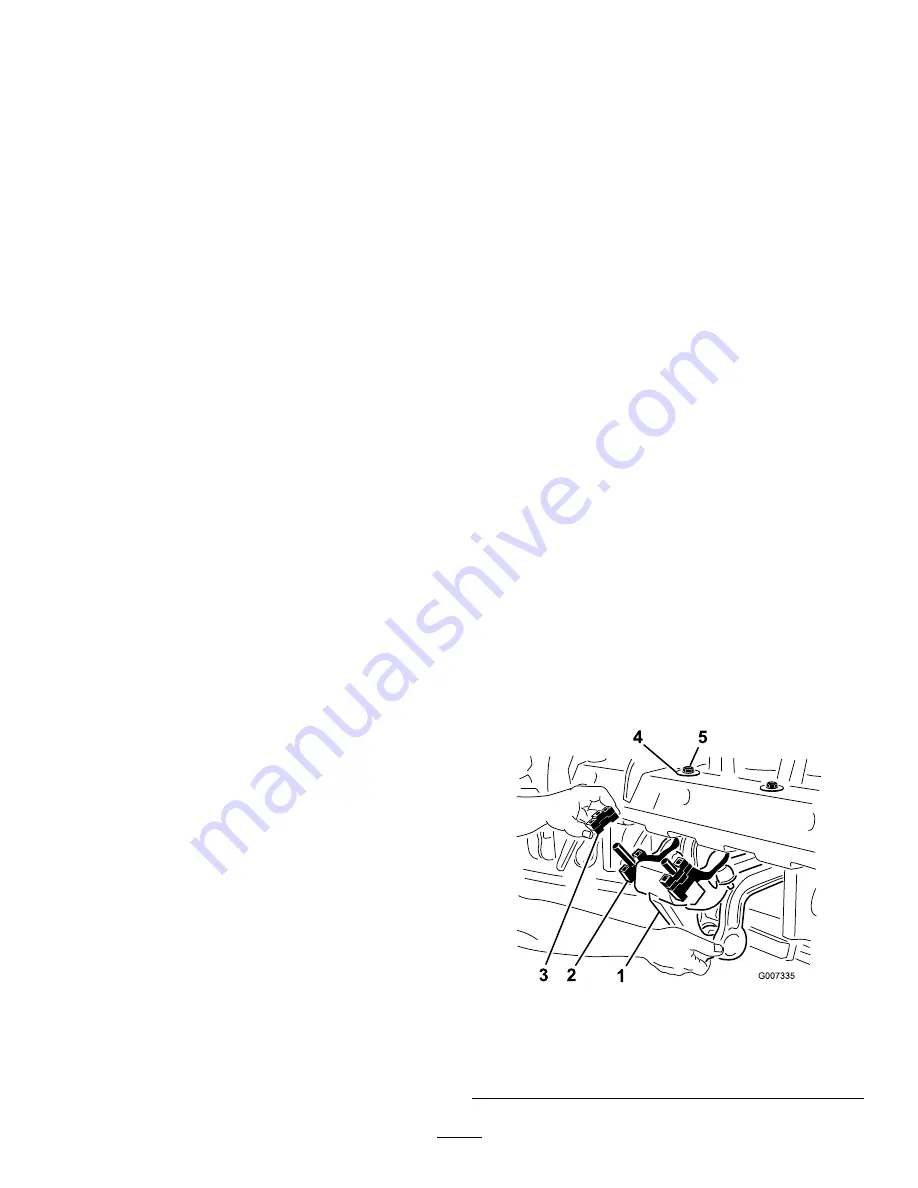
6.
Use the front tractor wheel as a guide to maintain equal
lateral hole spacing with the previous pass.
7.
At the end of the aeration pass, raise the aerator and
disengage the PTO.
8.
If you back into a tight area (like a tee box), disengage
the PTO and raise the aerator to the highest position.
Use caution not to catch the turf guards on the turf.
9.
Always clear the area of all damaged machine parts,
such as broken tines, etc., to prevent anything from
being picked up and thrown by mowers or other turf
maintenance equipment.
10.
Replace broken tines, inspect and correct damage to
those still usable. Repair any other machine damage
before commencing operation.
Aerating Hard Ground
If the ground is too firm to obtain the desired coring depth,
the coring head can get into a “bouncing” rhythm. This is
due to the tines attempting to penetrate the hard pan. This
condition can be corrected by attempting one or more of
the following:
•
Best results are obtained after a rain or when turf has
been watered the previous day.
•
Reduce the number of tines per stomper arm. Attempt
to maintain a symmetrical tine configuration to evenly
load the stomper arms.
•
Reduce aerator penetration (depth setting) if the ground
is hard packed. Clean up the cores, water the turf, and
aerate again at a deeper penetration.
Aeration of soil types built on top of hard subsoils (i.e.
sand/soil cap placed over rocky ground) can cause undesired
hole quality. This is caused when the aeration depth is greater
than the soil cap and the subsoil is too hard to penetrate.
When the tines contact this subsoil the aerator may lift and
cause the top of the holes to become elongated. Reduce the
aeration depth sufficiently to avoid penetration into the hard
subsoil.
Using Needle Tines
Long slender tines used in either a needle tine head or mini
tine head can leave the front or rear of the hole tufted
or slightly deformed. Hole quality for this configuration
generally improves if the coring head speed is reduced 10 to
15% from full operating speed. For PTO powered aerators
reduced the engine speed until the PTO speed is around 460
to 490 rpm. The forward spacing is not effected by reducing
the engine speed. The pushed hole can also be affected by the
position of the rotalink damper assembly. Refer to
the Rotalink Assembly (page 21)
.
Avoiding Root Zone Lifting
Using the mini-tine heads in conjunction with larger coring
tines or large diameter solid tines can induce significant stress
on the root zone of the turf. This stress can fracture the root
zone and cause a lifting action to the turf. If this damage
occurs try one or more of the following:
•
Reduce the tine density (remove some of the tines).
•
Decrease the coring depth (suggested in 1/2 inch
increments).
•
Increase the forward hole spacing (change the tractor
transmission up one gear).
•
Decrease the tine diameter (solid or coring).
Adjusting the Rotalink
Assembly
The mounting height of the rotalink damper assembly affects
the reactive force applied to the stomper arm and ground
engagement during aeration. In the event of the front of the
hole being pushed (elongated or dimpled), a “stiffer” position
can help resist this push and improve hole quality. In the
event of the back of the hole being pushed (elongated or
dimpled) a “softer” position can improve the hole quality.
To adjust the rotalink assembly, proceed as follows:
1.
Remove the 2 locknuts (1/2 inch) securing the rotalink
damper assembly to the underside of the coring head
frame (
2.
Lower the damper assembly to expose the spacers
(
).
3.
Move 1 or 2 spacers per side from the damper assembly
to the top of the coring head frame. Each spacer is
equivalent to 1/2 inch. The lower bumper spacer must
remain on the damper assembly.
g007335
Figure 26
1.
Rotalink damper assembly
4.
D washer
2.
Lower bumper spacer
5.
Locknut
3.
Spacer(s)
21
Содержание ProCore 1298
Страница 17: ...g028725 Figure 21 17...
Страница 18: ...g028724 Figure 22 18...












































